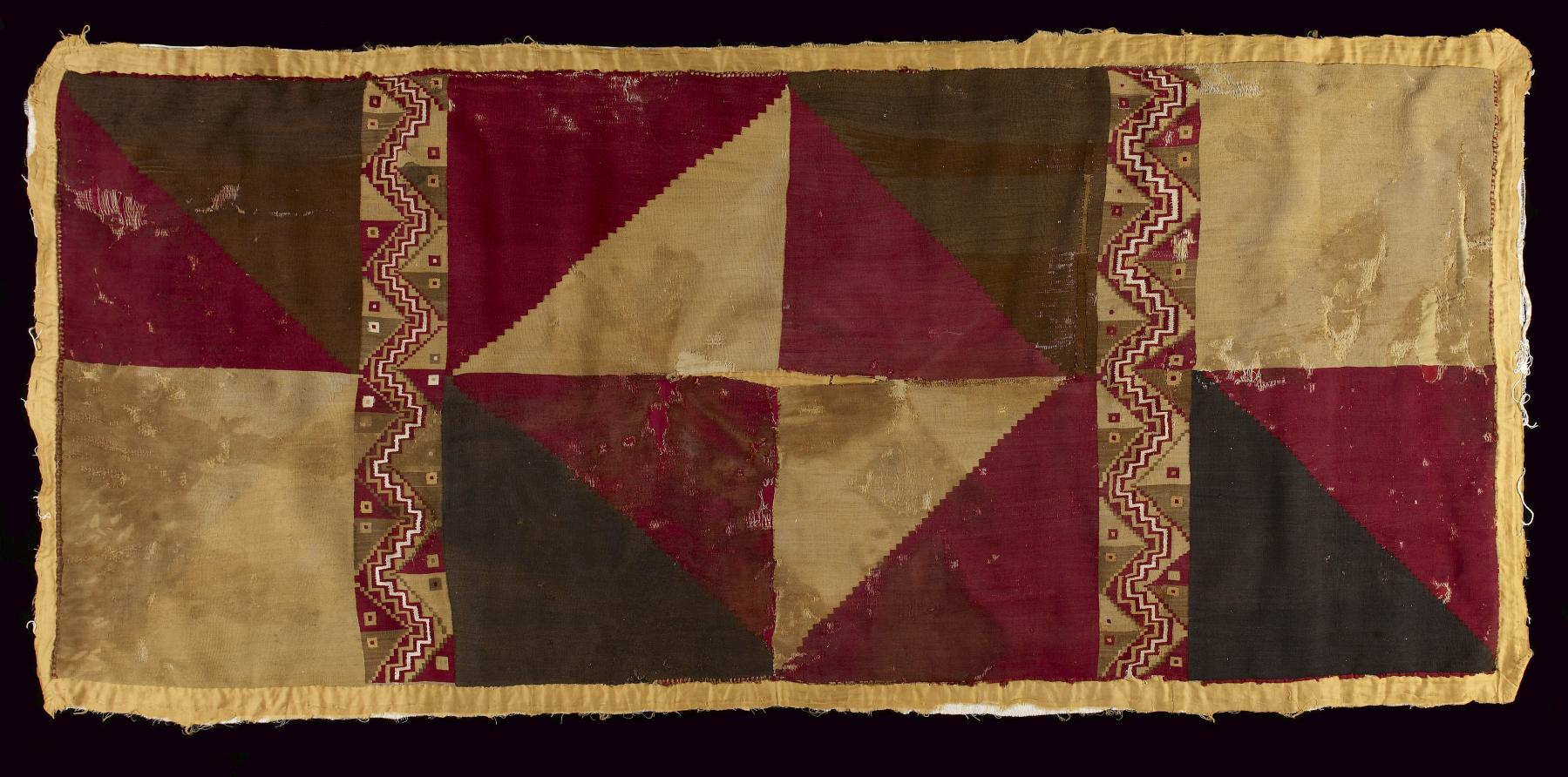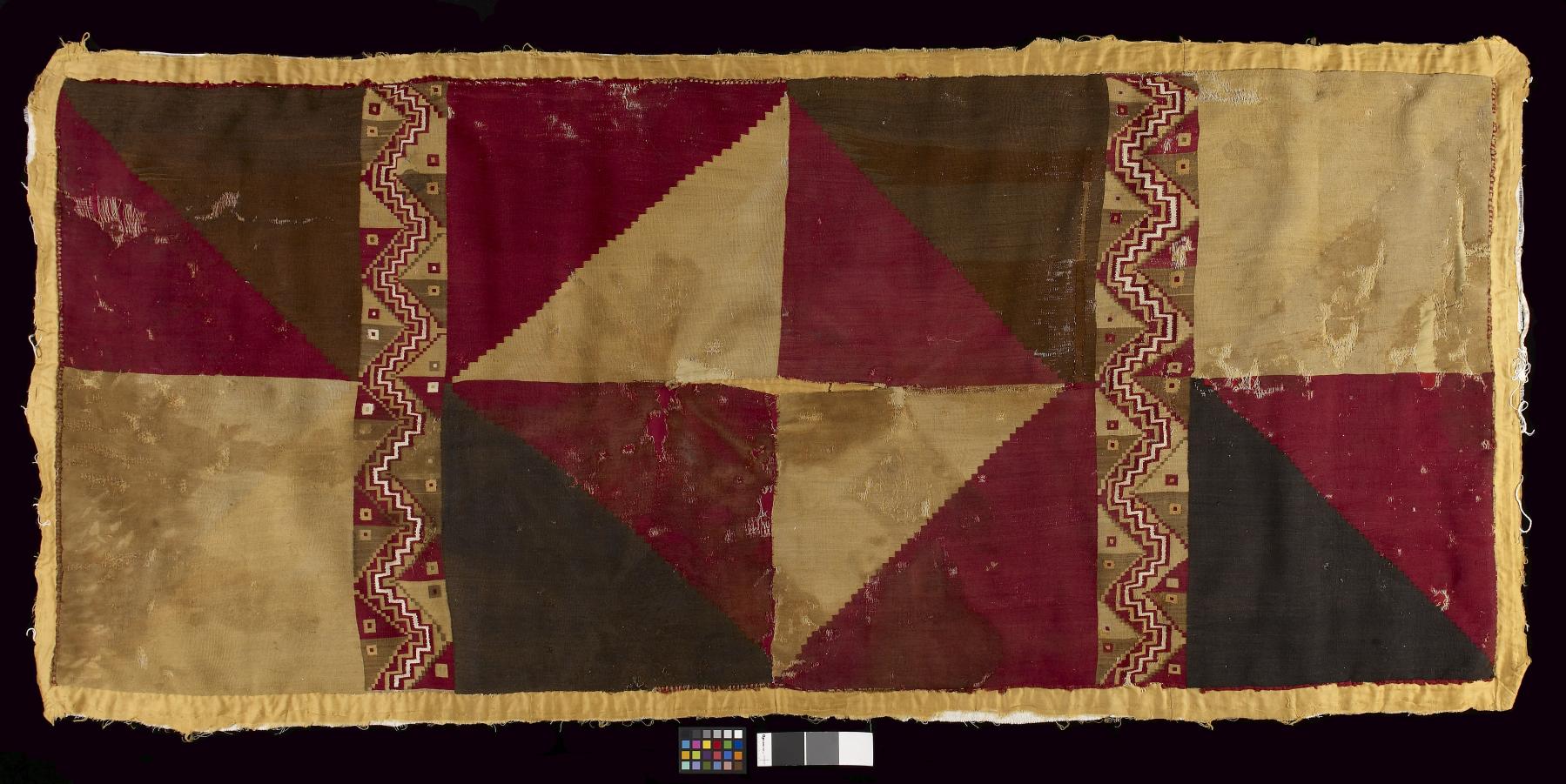"Uncu" (Tunic)
(Ancient Americas )
Inca uncu, or knee-length, sleeveless tunics were some of the most important objects made for the society, capable of carrying complex and sophisticated meanings about identity and status. This tunic, longer than it is wide (when correctly oriented), was intentionally woven from a single piece of cloth, as it was considered improper to cut fabric to create a tunic. The cloth would have a slit for the neck woven into it, and then was folded at shoulder level and stitched up the sides, leaving arm holes open at the top.
While this example is not in pristine condition, its materials show that it was originally a high status garment. The very finest Inca tunics were made from very finely woven cloth called cumbi or combi, and this tunic seems to be made from this fabric. Its iconography as well shows that it was a marker of high rank - while it does not include multiple iconographic squares or tocapu covering the whole garment, they are included in the elaborate band across the waist. This type of tunic fits into the diamond-waist style. It likely indicated a rank that was accorded to an individual by the Inca king, who controlled the distribution of textiles across his empire.
Provenance
Provenance (from the French provenir, 'to come from/forth') is the chronology of the ownership, custody, or location of a historical object. Learn more about provenance at the Walters.
Purchased by Georgia de Havenon, New York; given to Walters Art Museum, 2016.
Geographies
Peru, Southern Highlands, Inka (Place of Origin)
Measurements
H: 70 x W: 28 1/2 in. (177.8 x 72.39 cm)
Credit Line
Gift of Georgia and Michael de Havenon, 2016
Location in Museum
Not on view
Accession Number
In libraries, galleries, museums, and archives, an accession number is a unique identifier assigned to each object in the collection.
In libraries, galleries, museums, and archives, an accession number is a unique identifier assigned to each object in the collection.
2011.20.14






